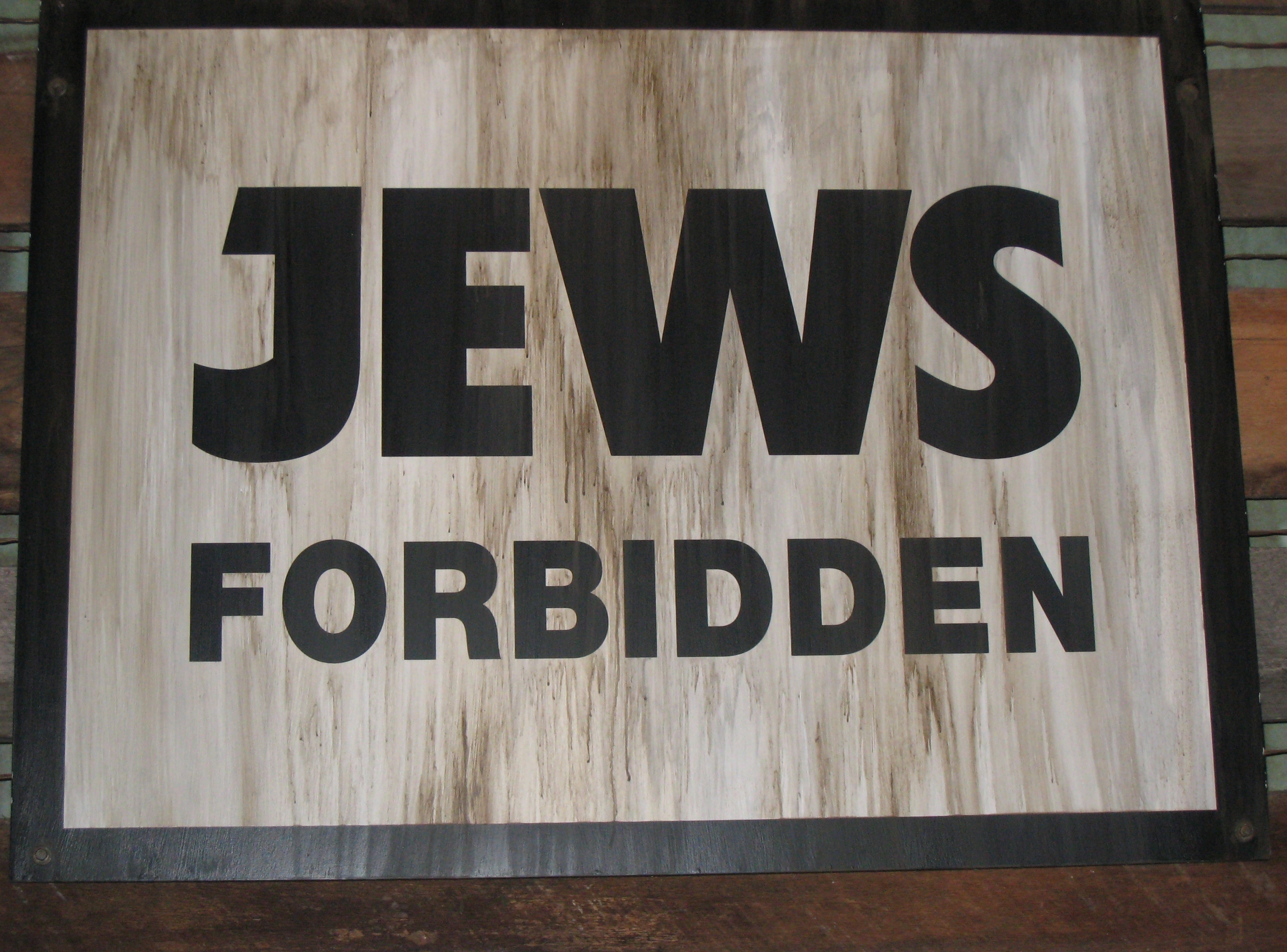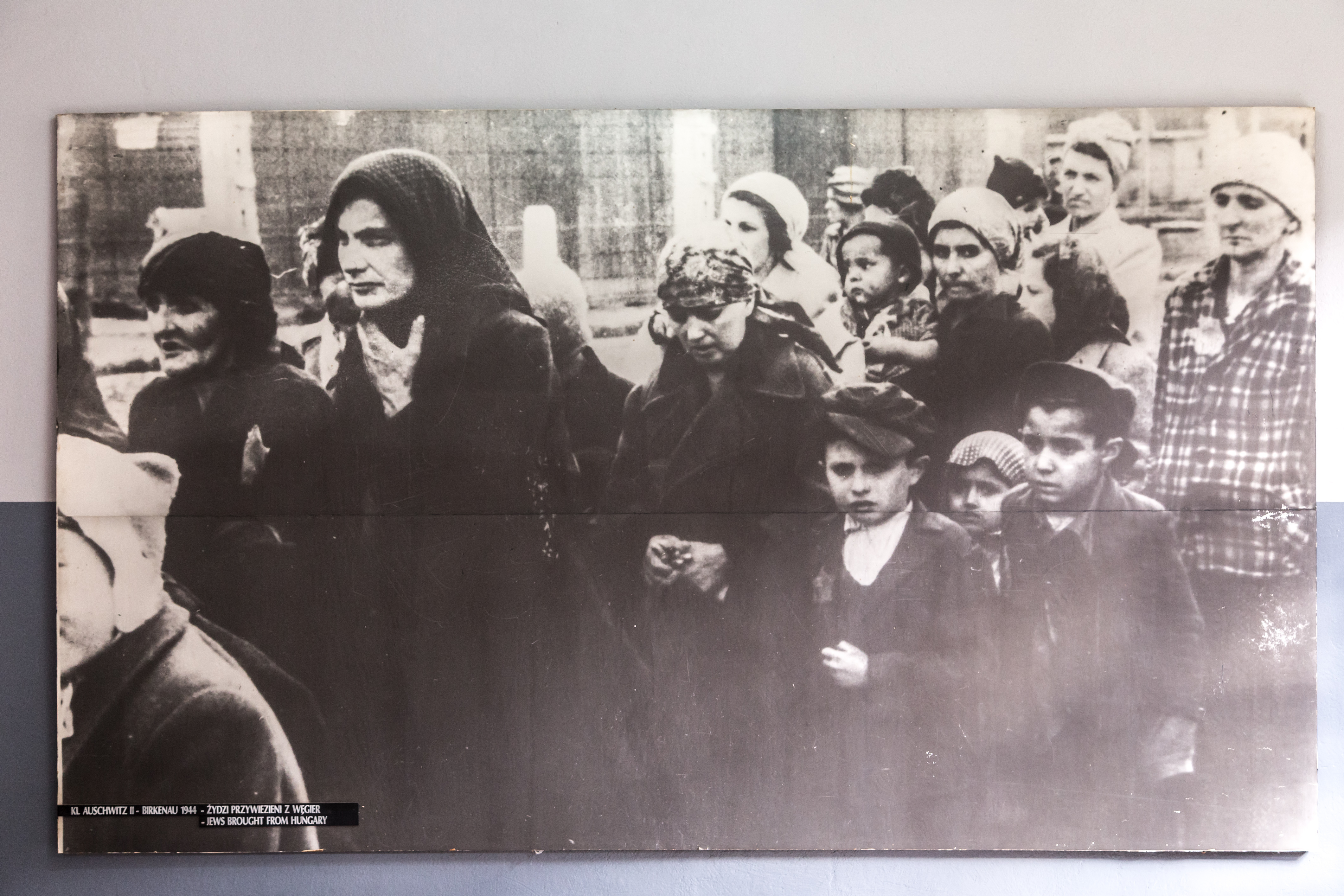Anti-Semitism was central to the ideology of Nazism and, in particular, to Hitler’s own system of belief. It was a paranoid fantasy which sought to explain anything that Nazis disapproved of as a result of a conspiratorial mindset which was inherent in Jewish blood. The Nazis believed in racial theory, and the Jews, in their view, were a race that was hereditarily inclined to be subversive, destructive and to conspire to undermine Germany and the Western civilisation. This belief had come about in the late 19th century, but it’s the First World War that brought it to the fore, after which the Nazis emerged as an extreme right-wing party with this belief in Jewish subversion at its centre.
As soon as they came to power, they began legislating against the Jews: they passed laws and decrees which banned them from the civil service, from teaching legal professions, and they increasingly deprived them of a means of subsistence, destroying their economic position by the eve of the Second World War. The Jews were a very small minority in Germany, less than 1%, but the Nazis believed that Jewish subversion had been behind the German defeat in the First World War. It’s complete nonsense, of course, but they made this a core part of their ideology. In 1941, on invading Eastern Poland, the Soviet Union and the surrounding areas, they came into contact with an enormously greater Jewish population, and they extended their belief in the subversive nature of Jews to the millions of Jews living in this part of East Central Europe.
Two levels of racism
Already in 1939, the Nazis’ core belief in race and racism had turned the war into a racial war in which they started by trying to exterminate the Polish elite, who were not Jewish at all. They believed, however, that Poles and Slavs were inferior and had to be swept out of the way to make room for German settlers in East Central Europe, including Ukraine. Ukraine was known as the breadbasket of Europe, and Hitler believed that if you could control this whole area, you could supply Germany with food during this major world war. There were two kinds of levels of racism: the racism against the Slavs, which, from 1942, is official Nazi policy. The General Plan for the East envisioned getting rid of 30 to 45 million Slavs by process of starvation, neglect and disease. There was another, more concentrated, level of racism, which is the belief that Jews everywhere were subversive, that there was a global Jewish conspiracy to destroy Germany, not steered by any particular individual, but by all Jews. They had to be located and destroyed – killed – wherever they could be found.
From the beginning of the war, the Jews in the areas the Nazis conquered were herded into ghettos, starved, brutalised and increasingly subjected to violence by the Nazis. During the 1941 Operation Barbarossa – the invasion of Eastern Europe and the Soviet Union – the armed forces, and particularly the SS, Hitler’s black, uniformed elite guard, swept in behind the army and began killing Jews in very large numbers, initially shooting them into pits. Because this led to a number of problems of nervous breakdowns among the men who had to carry out the shootings – and because it wasn’t fast enough for the Nazi leadership – the Nazis created the death camps. Death camps were not the same as concentration camps, which, in Germany, were meant to deal with the opponents of Nazism. These were camps deliberately designed just for killing: Treblinka, Sobibor, Majdanek, CheÅ‚mno – or Kulmhof – and later on Auschwitz-Birkenau. German troops, particularly the SS, rounded up Jews and transported them to these killing facilities. By a number of different means, the Nazis killed about 6 million Jews by shooting, starving, neglecting and gassing them.
Extreme hatred and fear
Nazi racist exterminism, if you can use that term, also covered other groups – the so-called Slavs, gypsies, the Cintia Roma, who again were subjected to racial discrimination by the Nazis and then slated for death; yet, they were essentially exterminated by the Nazis to get them out of the way. They were not thought of by the Nazis as a global existential threat to the existence of Germany or Western civilisation; the Jews were, and that made anti-Semitism qualitatively different. If you look at the reports of soldiers writing home, for example, or official reports even by SS death squads – the Einsatzgruppen – you can see in the detail they carry that the Jews were always treated by the troops, as well as the extermination squads, as different. They were treated with much greater sadism, much greater brutality, a kind of extreme hatred and fear. And this doesn’t, in my view, apply to the many hundreds of thousands of so-called Slavs that the Nazis killed.
They knew it was a crime
Now, this is one of the greatest crimes in human history, if not the greatest. In fact, the Nazis were aware that this would not be seen as acceptable by the global community. There are some notorious speeches by the head of the SS, Heinrich Himmler, in Posen, where he describes the extermination of the Jews very graphically and says this is a page of glory in their history which can never be talked about openly. So, they knew it was a crime, but they felt it was necessary in terms of the racial history of the world, or the rest of the world in which they interpreted everything in racial terms. So what did the German people think about this? It was kind of an open secret, you might say. You weren’t supposed to talk about it, but, of course, soldiers did in their letters home or when they visited Germany on leave from the Eastern Front. During the allied bombing raids of German cities in the 1940s, there were reports of people saying that it was the revenge of the Jews: We’ve exterminated them. It’s not surprising that they are bombing our cities. Of course, this shows, to some extent, how people had been influenced by Nazi propaganda because they thought, as the Nazis thought, that the bombing raids were set in motion by the Jews, who were running the governments of Britain, America and Soviet Russia.
After the end of the war, Germans remained silent about the extermination of the Jews. They pretended that they’d known nothing about it; they denied any responsibility for it. From the Jewish point of view, the survivors and their relatives didn’t want to talk about it. Everyone wanted to get on with their own lives after 1945 – rebuilding them whether they'd been Germans or Jews – and it wasn’t until the late 1960s, with the arrival of a new generation on the scene in Germany, that things began to change. In the 1990s, after the fall of the Berlin Wall and the opening up of Eastern Europe to a free inquiry, free debate, free access to archives sources and so on, the extermination of the Jews became known as the Holocaust. There were Holocaust museums establishing themselves, and increasing amounts written by historians debating the Holocaust, reconstructing its history, probing and arguing about the motives for it. There are films like Schindler’s List. It becomes a central part of what you might call the moral consciousness of the globe.
Holocaust deniers
There has always been a small number of people who have sought to deny the Holocaust. There is overwhelming contemporary evidence, memories of Holocaust survivors and very thorough and very wide-ranging documentation. The deniers have been engaged in all kinds of historical manipulation of doctoring the source material if they can. Of course, Holocaust denial is anti-Semitic. In other words, it’s a conspiracy theory that says there’s been an enormous cover-up, that the Jews have controlled the media since the Second World War and have persuaded everybody that it happened, whereas, in fact, it didn’t. It is a completely absurd lie. Will it become more widespread and more effective after the last of the survivors of the Holocaust, the people who lived through it and survived, die? I don’t think so. I was involved in a trial, a libel, a civil action defamation trial, in the year 2000, in which historians, including myself as an expert witness, showed that distortion, manipulation, falsification of the evidence about the Holocaust can be exposed. We can piece together the evidence and show that these things actually happened so that we do not depend on the presence and testimony of the survivors for our knowledge of the Holocaust.


